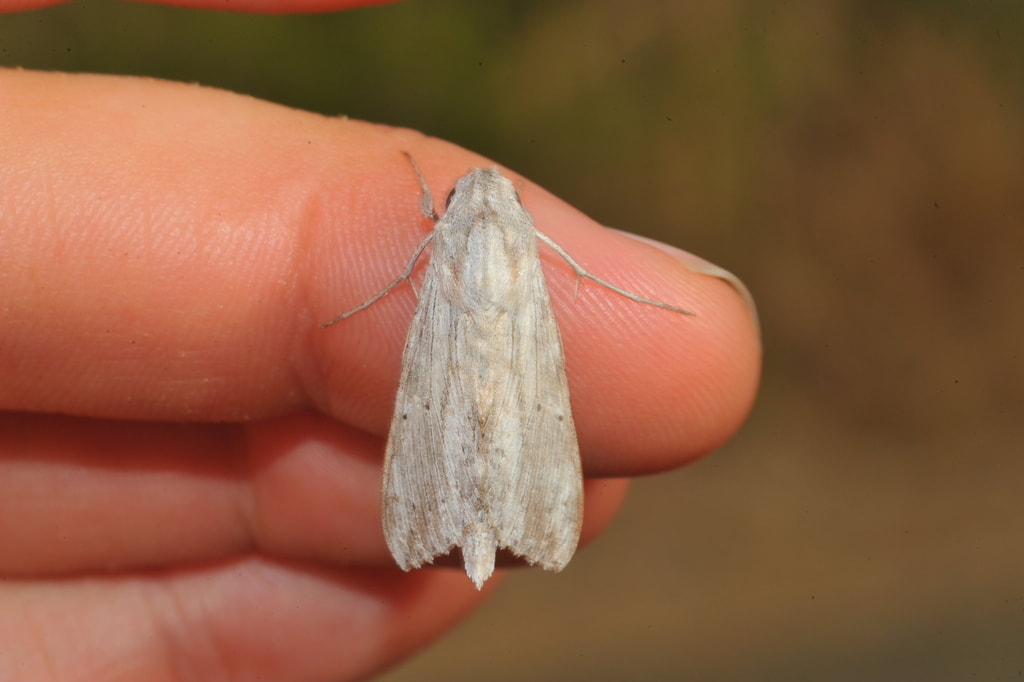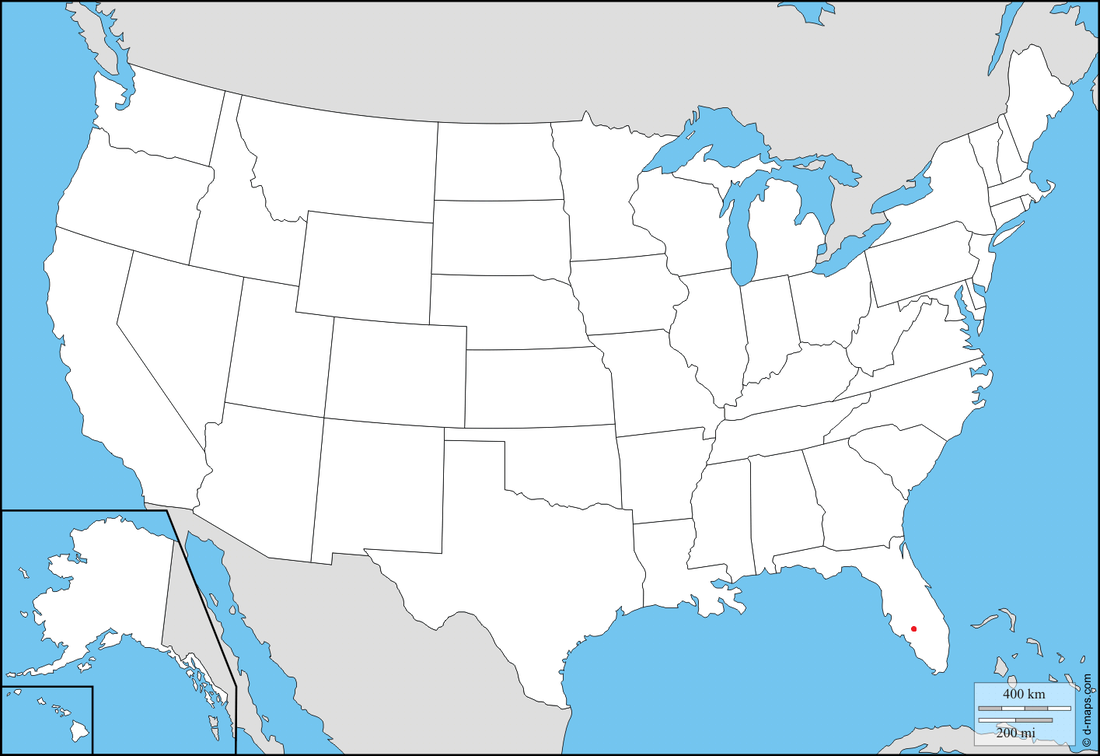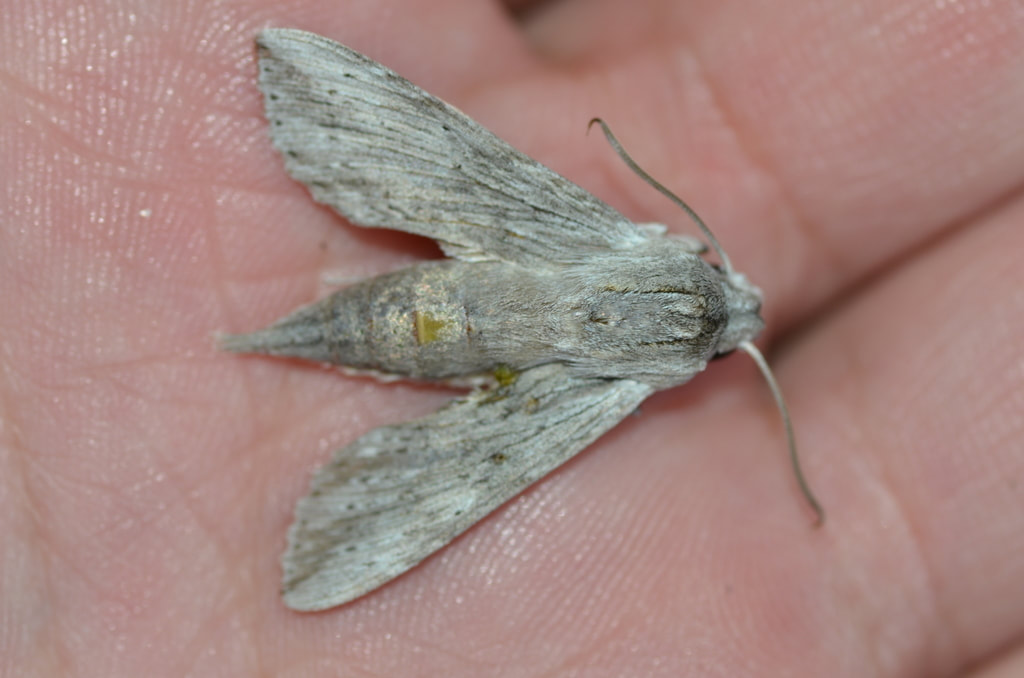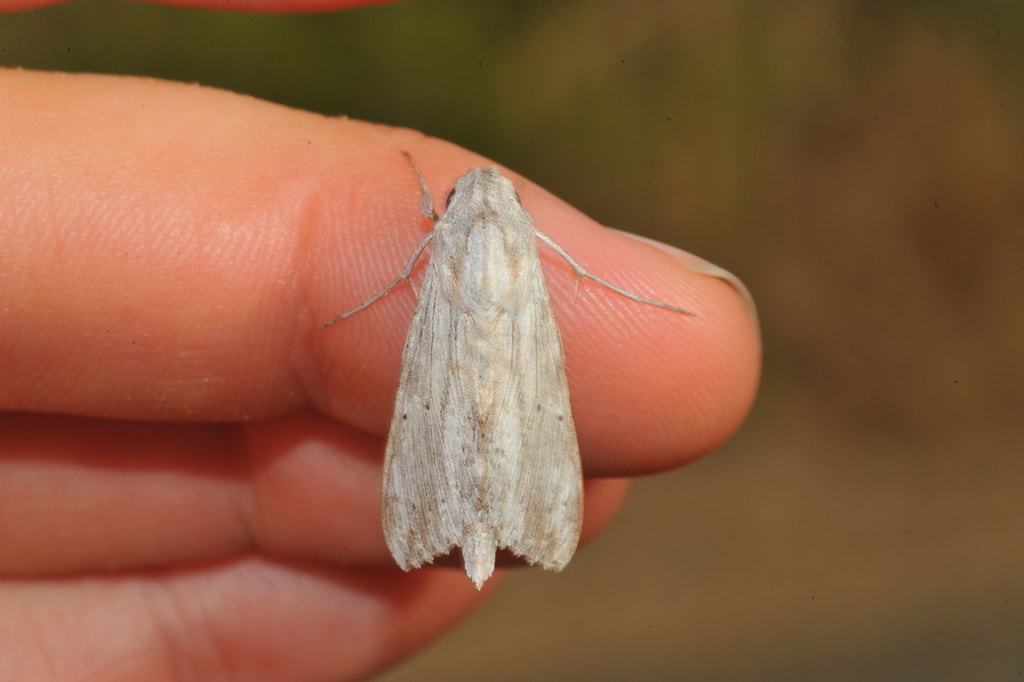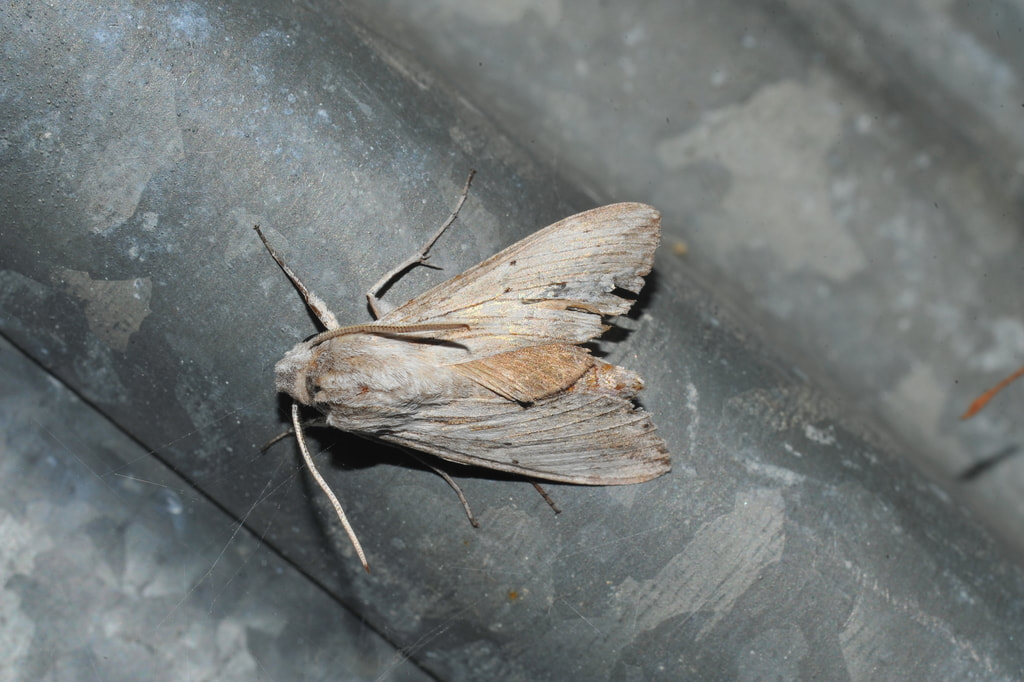|
Common Name: no accepted common name
Ecology and Life History: This moth likely breeds year-round in Central and South America. It is only a rare stray to Florida in the USA. This moth can be taken at artificial light. This species is not sexually dimorphic. Currently, nothing is known about the larval form of this species. Habitat and Searching for Larvae: Virtually nothing is known about the larval habits of this species. It likely feeds on plants in the Apocynaceae. Rearing Notes: {COMING SOON} Adult Description: The easiest species in the genus to identify. This is a small gray moth with forewings measuring 17-21mm in length. The forewings are plain gray, and the hindwings are a slightly darker shade of gray-brown. There is a dark streak that runs through part of the forewing starting at the basal area. Due to its gray coloration and small size, it is unlikely to be mistaken for any other member of the genus let alone other Sphingidae found in the USA. Larval Description: Currently unknown. Host plants: Click here to load this Caspio Cloud Database
Cloud Database by Caspio |
The gallery to the left contains photos of Erinnyis guttularis adults. If you have a photo that you would like to submit to us, please contact us.
The gallery to the right contains photos of Erinnyis guttularis larval and pupal stages. If you have a photo that you would like to submit to us, please contact us.
The gallery to the right contains photos of Erinnyis guttularis larval and pupal stages. If you have a photo that you would like to submit to us, please contact us.
